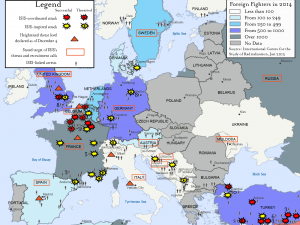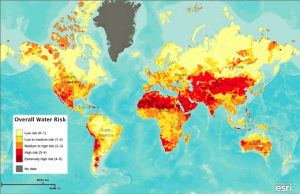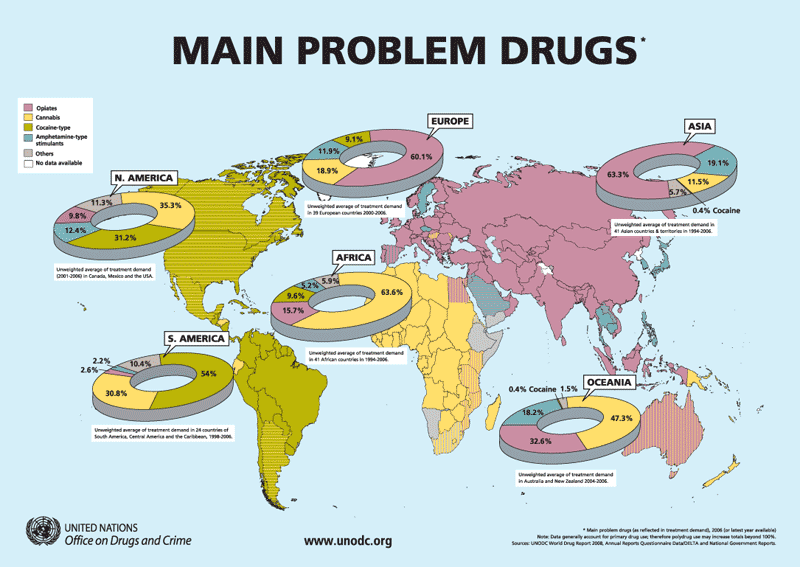 The World High
The World High
The World Drug Report estimated that in a given year, 250,000,000 people, that’s a quarter of a billion, used drugs. Of those people using, it wasn’t all medicinal, it wasn’t all recreational, and it wasn’t all abuse and addiction. Along with this combination of different types of categories drug taking falls into, comes the different categories of drugs: methamphetamines, cannabis, cocaine, opiates, etc. all played a role in this number. That being said, in 2008 the United Nations Office of Drugs and Crime decided it was best to break down what drugs were affecting what areas of the world in terms of usage and prevalence from region to region. Drug addiction and usage is a terrible thing in the world, but it is fair to say that some drugs are much more dangerous than others, and so mapping what drugs are being used where, the map is able to serve as a rubric for what areas are in need of the most reform in terms of drug laws.
An ever growing topic of debate, whether you love it or hate or are undecided on the subject, the spread of drugs throughout the world grows exponentially as technology and laws change over time. In today’s world, there are recreational and medicinal drugs ranging from common household items such as aspirin to heavy hitting heroin and methamphetamines. Along with the growth of drug use and drug trade comes rather naturally the abuse and problems of that said drug. As this map suggests, it shows the prevalence of the main problem drugs corresponding to the continents of the earth. Asia’s and Europe’s is opiates, a sedative like drug akin to morphine derived from opium. Africa’s and Oceania’s is cannabis, which falls under the category of a psychotropic drug. South America deals with the cocaine based drugs which act as anesthetics, similar to opiates. North America as well as some part of South America is striped with cocaine and cannabis to show that there is a prevalence for problems with both of those drugs in the region. With differing regions and areas came changing percentages of what drugs are deemed as problems.
One look at this map and the mind is bombarded with thoughts that everyone in that region is high off of the said drug with the highest percentage. This map in turn makes the entire world look like one sleazy back alley club where morals are through the floor and drugs flow like a river, but that’s not the case. The map is to show what drug is use the most, among drug users. Not everyone in the pie charts have drug addictions, not everyone on the pie charts are high school dropout nobodies. The map is mapping out popular drugs by percentages around the world and what causes one area of the globe to have an abundance more of a certain drug compared to another area are fluency, availability, pop culture, and laws.
Humans have a tendency to want to do something more when they are told no (just look at the story of Adam and Eve), so if “the man” tells you not to take a drug, the odds of people wanting to take that drug more skyrocket. An increase in laws preventing certain drugs from being consumed can lead to both an increase in addiction but as well as the pricing of the drug and its availability. With cannabis being legalized by more states in The United States, the black market price for weed as plummeted since the only thing keeping the prices high were all caused by the danger of the production and selling of it. The stricter laws there are in an area for a certain drug, the higher the danger and in turn the higher price for that drug. Fewer people want to buy it in a smaller amount which can all lead to a scale down of addiction and users. Now, since every drug is different and should be handled as so, a drug such as cannabis that is being welcomed into the ever changing world is a drug that wouldn’t need a strong control since theoretically it is a less dangerous drug than some of the drugs on the list (there have been no confirmed deaths from cannabis use). Drug laws and drug use are all subject to their own change since they are all different.
Popular culture has always been a hub for drugs. Whether it be Snoop Dogg and Wiz Khalifa smoking joints on stage at their concerts or Prince overdosing on Fentanyl, an extremely potent opioid, the music industry has seen its fair share of drug users. What drugs are used as muses in music pieces add to what drugs are popular concerning pop culture. It was once “cool” to smoke cigarettes and now there is an all out war being waged on big tobacco companies because times, ideas, and yes, pop culture, have changed. Will it eventually be deemed “cool” to do heroin or smoke weed or snort a line of cocaine, maybe, but that’s only if the media puts a positive and glamorous spin on the drugs. Take a look at North America on this map for example, where it seems like every day there’s a new rap song about smoking weed or casually doing cocaine with friends, the drugs most prevalent to that area and the culture. The map is able to be used to break down what regions use what drugs, and that could then serve as to what is popular or cool to do there.
The UNODC aimed to raise awareness of problematic drugs in areas in order to spur ideas of how to fix those problematic drugs and why they are problematic there. When looking at the map, the map creator divides it up into the main continents of the world, classifying the problems in percentages of the continents. Pie charts are thrown in to make the reading off the map more quantitative to the reader. In doing this however, the mind of the reader is to think it’s 30% of the population, and not drug users, making them fear that everyone around them is using the drug, a scare tactic to goad people into wanting the expungement of the problematic drug. Another awareness tactic that is applied in this map that would make a chart less effective is the reader’s ability to pick out exactly where they live and see what drug is problematic there. Seeing the borders of your country and having meth be the problematic drug is pretty scary if you’ve never encountered it yourself as compared to just seeing a bar that says “Europe” because you don’t associate that bar on a bar graph with your area, just “the other parts of Europe.”
Some countries may be exempt from the problem drug and what percentage they carry of drug users on that continent. This is where legality comes into play because a certain drug might not be as readily available in one place so a different drug is abused, but they are still grouped into the overall continental problem drug. For example, Sweden is colored blue instead of purple to show that they deal with amphetamine type stimulants rather than the opiates that plague the rest of Europe for one reason or another.
In terms of choosing coloring for the percentages, the map maker most likely chose the color closely related to that drug. Opium is originally a reddish brown before it is synthesized into opiates, so a maroon pink color suited. Cannabis mainly has a light green hue, so a mustard color is used. Before cocaine is turned into the white powder everyone is accustomed to, it started out as leaves of the coca plant which are a faded green, so a faded green color was chosen. Most of the amphetamine drugs used in today’s world come in forms of small tabs, often of a blue color, or a generic pill with one side clear so you can see the drug inside with the other being a solid color, mainly blue.
It’s no argument that there’s a drug problem in the world. This map aims to put a number to those drug problems. Not all drugs are harmful, if used correctly. Some drugs mapped out on this map have a great future in the medical if they are used properly, but putting a stop to drug problems and drug addiction can’t be put in effect without knowing exactly where and what drugs are doing the harm. Thanks to the UNODC, we know just exactly what drugs we are fighting.

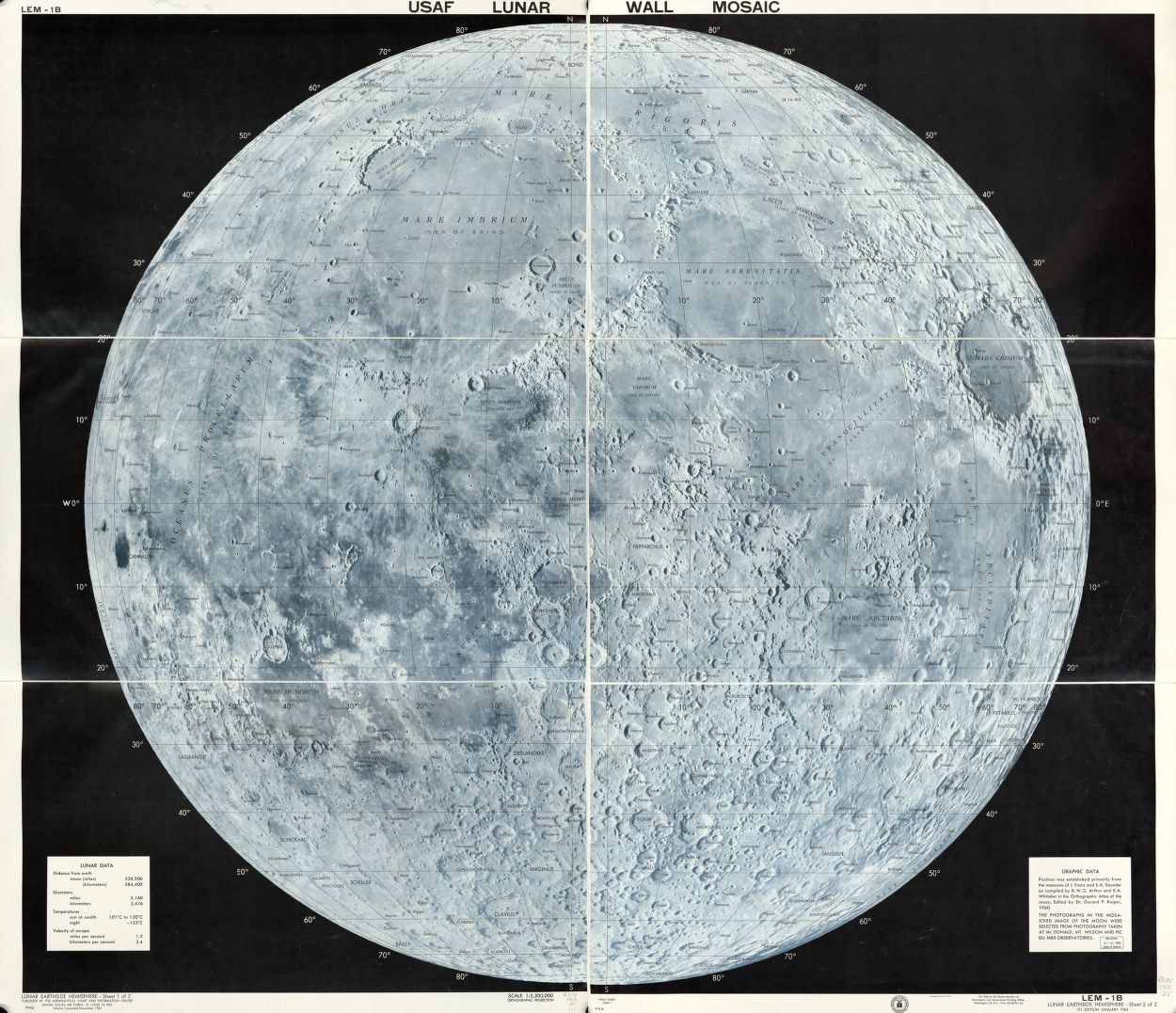

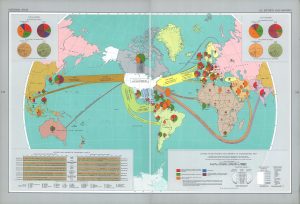 This map was created in 1967 and published in “The National Atlas of The United States in 1970. The base map was published in National Geographic. The different colors help the audience easily differentiate the
This map was created in 1967 and published in “The National Atlas of The United States in 1970. The base map was published in National Geographic. The different colors help the audience easily differentiate the